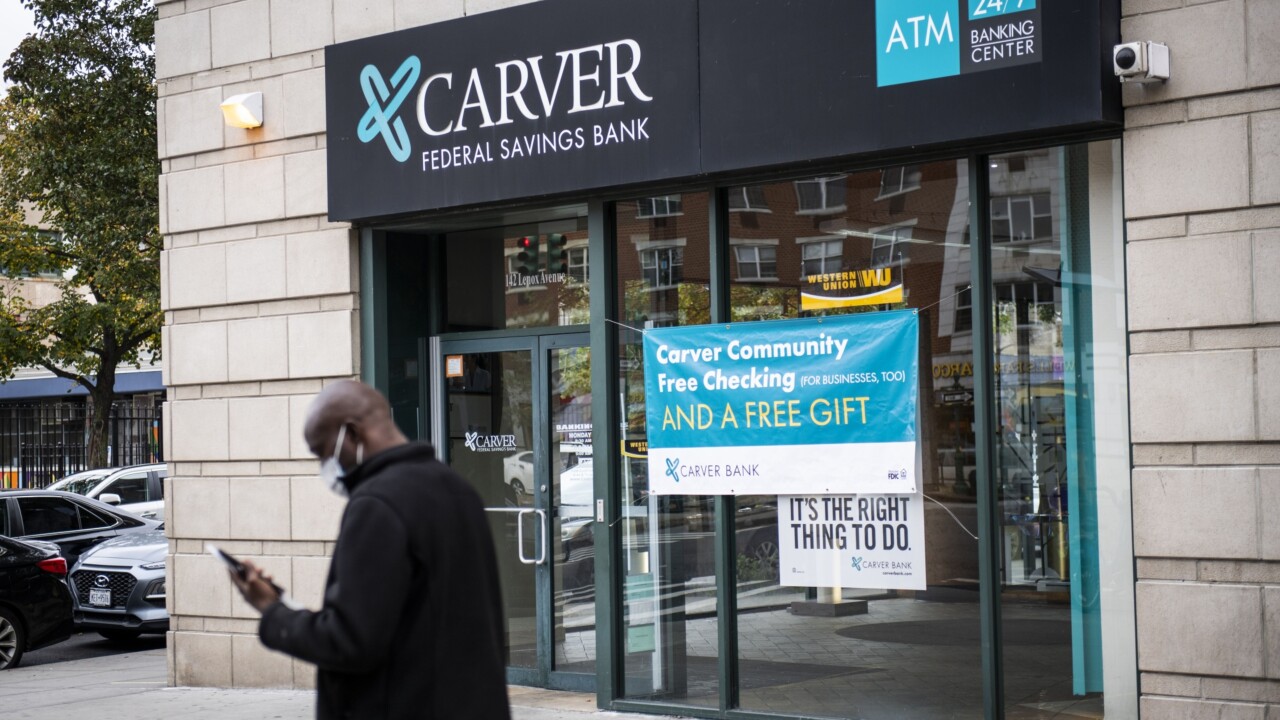When government agencies propose changes - often even changes that people say they want - they take a terrific risk.
Almost all of the time, an agency's constituency likes things just about the way they are.
So by proposing to change a system that only analysts think is broken, the Federal Deposit Insurance Corp. is attempting the regulatory equivalent of walking over Niagara Falls on a tightrope.
Most of the industry likes deposit insurance just the way it is. As academics and analysts wrangle, the industry knows one fundamental fact: Almost no banks or thrifts pay a dollar in premiums. Change would almost surely end this free ride. As a result, supporters in the industry for change may be hard to find.
This is unfortunate. The FDIC is right to warn of a crisis ahead if the system is not modernized now.
Last year Congress permitted the assembly of very large, complex organizations with massive insured depositories at their heart. It did so with scant regard for how any failures would be handled, other than blithely telling the FDIC not to protect financial holding company shareholders. It did so without reckoning on the ability of large retail financial services firms to bring billions in deposits into the insurance system without having paid a penny for the government seal on their doors.
The FDIC doesn't propose specific solutions, but rather lays out a framework for reform. However, the framework is based on an assumption that underlies each of the options presented: Premiums should be set far more precisely to match the default risk an insured institution presents to the fund.
On its face, this seems an inarguable position, but it will be argued hard all the same. As the immediate response from industry leaders suggested, many banks and thrifts fear that the zero-rate premiums they now have would rise under any scheme that placed them on a more graduated curve. Looking at paying something instead of nothing, they are opposed to change.
There is, though, another way to look at better differentiation of risk for risk-based premiums. Currently, banks with very high capital and reserve ratios pay the same for deposit insurance as those with far lower, albeit still prudent, levels.
The difference is dramatic in terms of potential default risk, with Camels 1-rated banks having less than half the risk of failure as Camels 2 institutions. The cost in terms of profit is a far more immediate concern.
Banks with high capital and reserve ratios, as well as asset concentrations in lower-risk businesses, earn less during good times than banks living closer to the edge. That's why the default risk is far lower, of course, but the government does not reward shareholders of low-risk institutions for paying the price of protecting the fund. While some banks would surely pay more for deposit insurance under a better risk differentiation, others would enjoy for the first time lower relative premiums that properly reflect their lower relative risk.
As the industry begins to consider the FDIC's options carefully, a split will almost surely evolve between large and small banks about the proposed risk-based pricing.
Not only will small banks fear that they will be seen generally as risky, but they will worry that many of the market-based mechanisms proposed for pricing insurance are easily applicable only to large institutions active in the national capital market. Large banks, on careful review, may well favor much of the FDIC's new approach to pricing premiums.
The tables will turn when large and small institutions take a look at the proposed approaches to handling systemic risk. Here, the FDIC not only walks on a tightrope over Niagara Falls, but positively dances on it.
The agency rightly concludes that the special assessment system set up in the FDIC Improvement Act of 1991 to handle "too big to fail" bank rescues is inequitable and, worse, ultimately counterproductive. Not only does it force small banks to pay for bailing out their big competitors, but it creates the implicit guarantee for very big banks, which permits their counterparties to behave with far more impunity to real risk.
Deposit insurance reform means venturing into the thin air of systemic risk. If, as small banks want, the deposit insurance ceilings are increased to, say, $200,000, then this will create additional moral hazard unless deposit insurance is properly priced to reflect true risk.
If true risk is calculated, then systemic risk must be factored into the equation measuring the FDIC's exposure when large banks fail. If systemic risk is counted into the premium base, then the agency must come up with a better way to liquidate large, complex organizations than exists today. If it does this, it cannot do so in the vacuum of the banking industry, but must venture farther out to consider all of the conglomerates that could affect the fate of the nation.
Looking at this daunting list of challenges, one might ask if the industry is at least practical, if not right, in pulling for the status quo.
However, change will come to deposit insurance by design or by default. It is to be hoped that the FDIC's effort to meet its challenges and reform the system in advance of the problems that lie ahead will be rewarded with the serious consideration it deserves.
Ms. Petrou is president of ISD/Shaw Inc., a financial regulation consulting firm in Washington.





